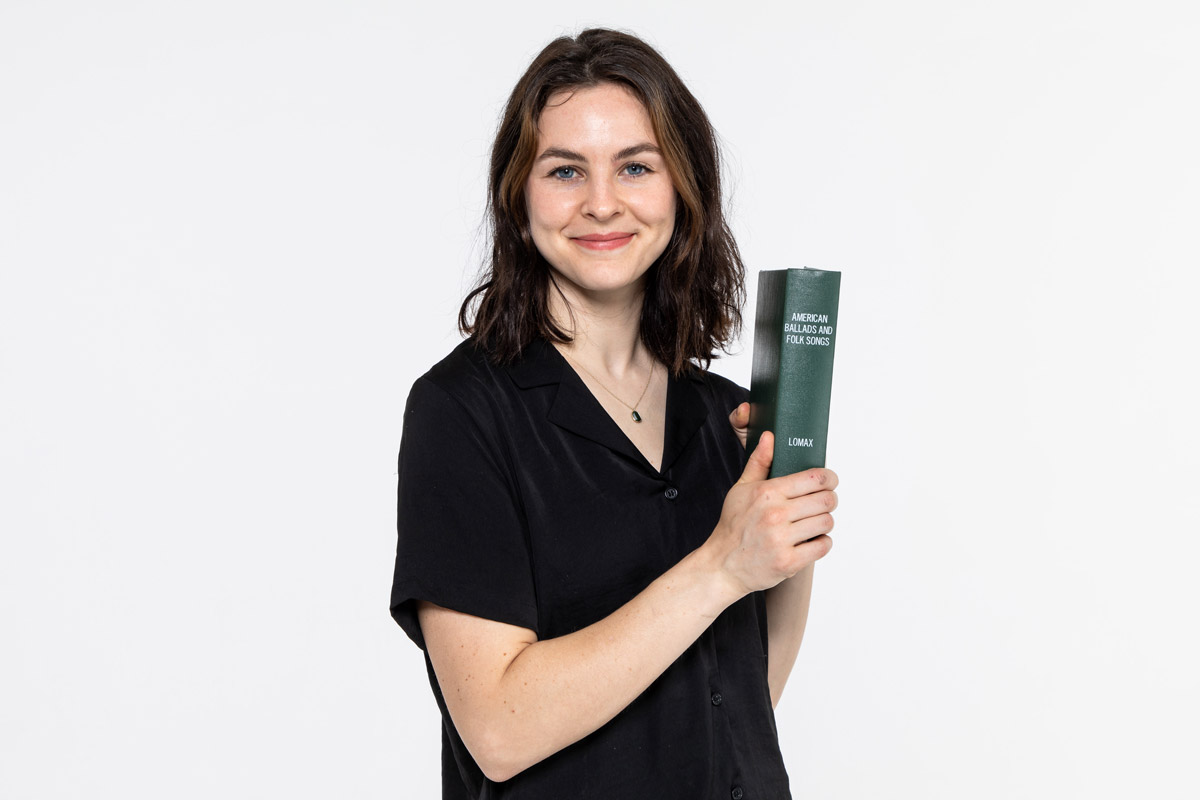Natural Disasters That Echo Through Generations
Meet ES-history major Natalie Murphy ’21
Major: environmental studies–history
Hometown: Islesboro, Maine
Thesis adviser: Prof Margot Minardi [history]
Thesis: “Musical Memories of Nature in the Dust Bowl and Great Migration”
What it’s about: How did migrants in the Great Migration and the Dust Bowl use music to express their experiences of natural disaster? My thesis analyzes folk, blues, and country lyrics about nature from the two very different periods and regions. I argue that for both events, migrants often appealed to nature in song as a means of “alluding to” or “eliding” systemic pressures in the human world, such as racism and white supremacy, the ongoing legacy of settler colonialism, and the cyclical nature of intergenerational poverty. Music offers a window for understanding natural disasters as both environmental and human-constructed events.
What it’s really about: Why people write songs about dirt and bugs.
In high school: I went to high school on a small island off the coast of Maine, and felt stifled by the geographic isolation. This often made me an argumentative and critical teenager. I've softened up since then by directing that energy into my academic work.
Influential class: Music 360, The Black Freedom Struggle with Prof. Mark Burford, completely changed the way I think about history and what constitutes a historical source. His syllabus is rich and his curiosity is infectious. Music is an incredible way to amplify the voices of those not captured by the written historical record. I wouldn’t have been able to write my thesis without some of the frameworks for thinking we used in this class.
Influential book: William deBuys introduced his book The Walk by saying, “A species of hope resides in the possibility of seeing one thing, one phenomenon or essence, so clearly and fully that the light of its understanding illuminates the rest of life.” I’ve held this idea close as a way of justifying the value of intense research in very narrow fields.
Concept that blew my mind: The birth of the sun from a protostar of hydrogen and helium. When I learned about this in Prof. Julie Frye’s chemistry class my first year, I walked around for days imbued with the idea that really ANYTHING could happen.
Cool stuff I got to do: I played rugby, started a (short-lived) sailing team, worked as a student operator at the Reed Research Reactor, served on Reed’s Judicial Board and Sexual Misconduct Board, held a SEEDS internship at a community shelter and resource hub, became involved in labor organizing across the city, and studied abroad in Florence, Italy.
Help along the way: I received a tremendous need-based aid package from Reed and an additional grant from the National Oceanic and Atmospheric Administration as an undergraduate Hollings Scholar, which also connected me with several internships in marine science.
Challenges I faced: I came to Reed several years after high school, so adjusting to first-year dorm living among students who had never left home was initially a challenge. Fortunately, this discomfort made making friends across classes and outside the Reed community far easier.
What’s next: Law school at the University of Baltimore, where I'll be attending a number of Orioles games.
